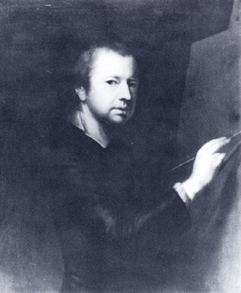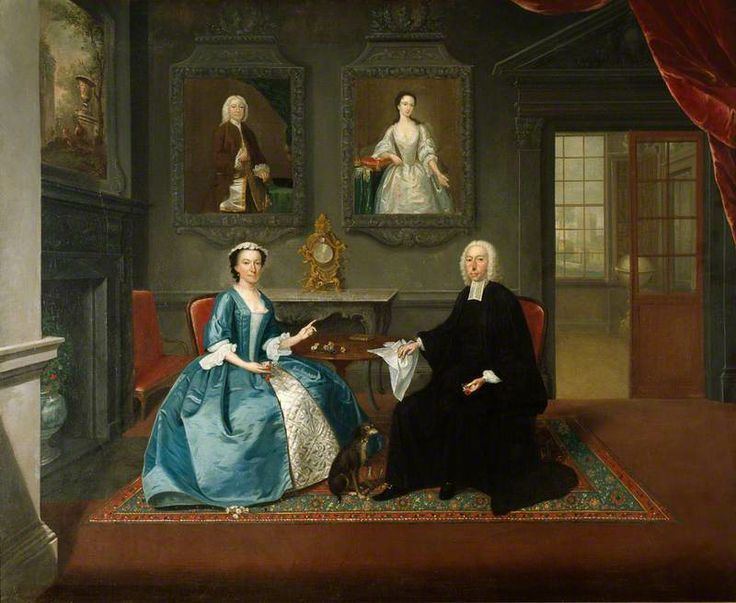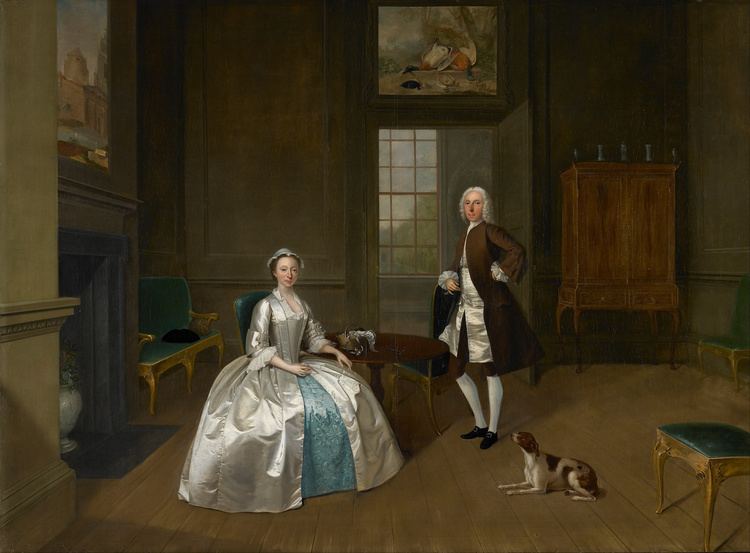Name Arthur Devis | Role Painter | |
 | ||
Died July 25, 1787, Brighton, United Kingdom Artwork The James Family, Mr. And Mrs. Atherton, A Lady in Blue Children Arthur William Devis, Ellin Devis, Thomas Anthony Devis | ||
Arthur Devis (19 February 1712 – 25 July 1787) was an English portrait painter, particularly known for the type of portrait now called a conversation piece.
Biography

Arthur Devis was born in Preston, Lancashire, the eldest son of Anthony Devis. His father, who was a member of the town council as well as a carpenter and a bookseller, may have been responsible for introducing Devis to the Flemish painter Peter Tillemans, who became his teacher. During the early 1730s, Devis is known to have been an assistant in Tillemans's studio, apparently copying views of Italy by artists such as Pannini and Marco Ricci. Not surprisingly, the first work Devis painted on commission, a depiction of a house within its park, also shows his interest in landscape (Hoghton Towers from Duxon Hill, Lancashire, 1735; Private collection). By 1737, however, he had become a portrait painter. In 1745, he established a studio in Great Queen Street, London, by which time he had acquired a considerable artistic reputation.
Devis received his greatest number of commissions for portraits between 1748 and 1758. Many of the pictures show the sitters in landscapes. Although portrayed with what seems like precise topographical detail, these views, like all but one of the interiors, were mostly invented by Devis. The exception is the neo-Gothic library at Arbury Hall shown in Devis's portrait of Sir Roger Newdigate, who holds the plan for the room on his knee.

During the 1760s, Devis's success as a portrait painter diminished sharply. Although he exhibited works at the new Free Society of Artists between 1761 and 1775 and in 1780, becoming its president in 1768, his style seemed old-fashioned compared to portraits by important contemporary artists such as Joshua Reynolds and Johann Zoffany. Art reviewers and observers like Horace Walpole were very critical of Devis's pictures. During the 1770s and 1780s, he seems to have made his living by restoring pictures. His most prominent job, done between 1777 and 1778, was restoring Sir James Thornhill's paintings in the Painted Hall in the old Royal Hospital for Seamen, Greenwich (now the Old Royal Naval College). Devis retired to Brighton in 1783 and died there in 1787. Devis is buried in the churchyard of St. Mary Paddington, London.

Devis married Elizabeth Faulkner (1719–1788) at St Katharine's by the Tower, London, on 20 July 1742. They had twenty-two children, only six of whom survived past infancy. Two, Thomas Anthony Devis (1757–1810) and Arthur William Devis (1762–1822), became painters. One, Ellin Devis (1746-1820), was a schoolmistress and author of the popular grammar The Accidence (1775). Devis's half-brother Anthony Devis (1729–1816) also was a painter.

